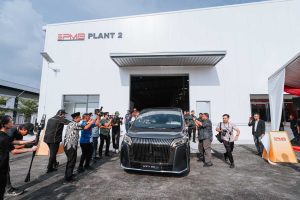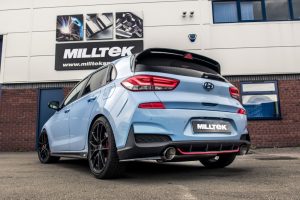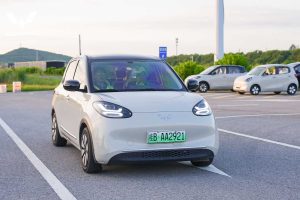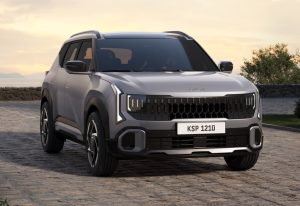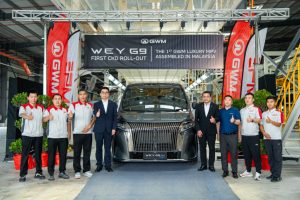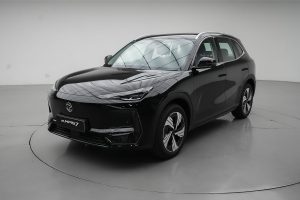FOLLOWING the introduction of the Honda City Hatchback line-up of four variants in December last year, the idyllic island of Langkawi became the destination earlier this month for the media to sample the V and RS e:HEV versions.
Although the V and RS were the top two variants at the time of the test drive at RM87,856 and RM107,783 respectively (on-the-road prices without insurance and sales tax), Honda Malaysia also launched a fifth V-Sensing offering last week.
The V-Sensing now slots itself between the V and RS at RM91,708.

City Hatchback RS.
This means that by adding a premium of some RM3,800, owners will be able to obtain the V and have it equipped with the Honda Sensing advanced driver assistance for added safety.
The system features include Adaptive Cruise Control (ACC), Collision Mitigation Braking System (CMBS), Forward Collision Warning (FCW), Lane Keep Assist System (LKAS), Road Departure Mitigation (RDM), Lane Departure Warning (LDW) and Automatic High Beam (AHB).
Aside from the V, V-Sensing and RS, there are still the entry-level S and E variants to consider at RM75,669 and RM83,075 respectively.

City V.
Except for the RS hybrid, the City Hatchback is provided with a 1.5-litre (1,498cc) dual cam i-VTEC engine producing 121PS at 6,600rpm and 145Nm of torque from 4,300rpm - all while being managed by a continuously variable transmission (CVT).
Only the RS gets an electric drive motor that outputs 109PS from 3,500rpm to 8,000rpm, and a whopping 253Nm of instant torque right up to 3,000rpm.

Its 1.5-litre Atkinson cycle dual cam i-VTEC engine, meanwhile is detuned to 98PS and 127Nm of torque and mated an Electric CVT (e-CVT).
The V may be the more sober and less flashy sibling to the RS but has all the necessaries that make up a modern day car.

For starters, the key highlights of the V are LEDs for the front and rear lights as well as the daytime running lights and fog lamps.
Thrown in are keyless-entry with push-start button, paddle-shifters, remote engine start, durable-feeling combination leather seats, dual-USB charging ports at the front and an eight-speaker sound system with an 8.0-inch touchscreen that provides Bluetooth connectivity on top of Apple CarPlay, Android Auto and a multi-angle reverse camera as well as the Honda LaneWatch camera system.

Despite the V and RS getting anti-lock braking system, electronic brakeforce distribution, brake assist, vehicle stability assist, hill-start assist and emergency stop-signal as standard, the RS offers more with Honda Sensing.
With the slew of safety features already found in the V, it almost seems not much of a point to get the RS, but then again, as the saying goes: “it’s always better to have and not need it than to need it and not have it”.
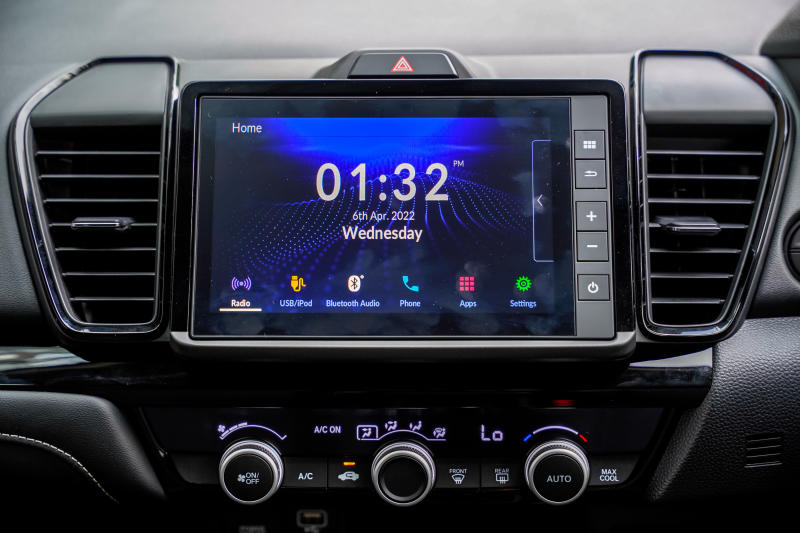
With the RS costing almost RM20,000 over the V, it means one has to dig deeper into his pocket to get it.
Luckily, with the introduction of the V Sensing variant, City Hatchback owners will be able to obtain the Honda Sensing system without forking out too much.
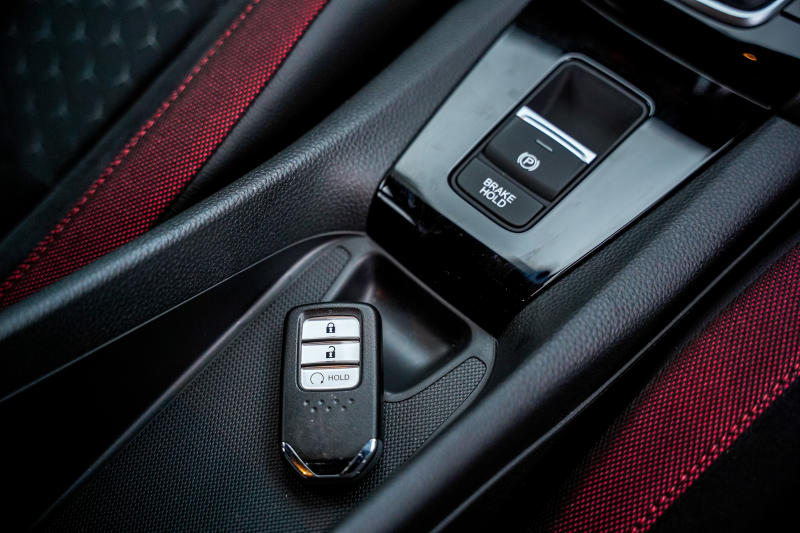
But at least there’s that notion of long-term fuel cost savings from the RS’ hybrid powertrain which will reward responsible driving buyers with a miserly consumption of 3.6 litres of petrol per 100km compared with the V’s figure of 5.6 - still considered a decent fuel efficiency.
The City Hatchback is a B-segment model that is designed mainly for urban use and yet be able to take on interstate travel in a stylish and pleasant environment.
Although the V and RS are from the same family, their differences are noticeable from behind the steering wheel.
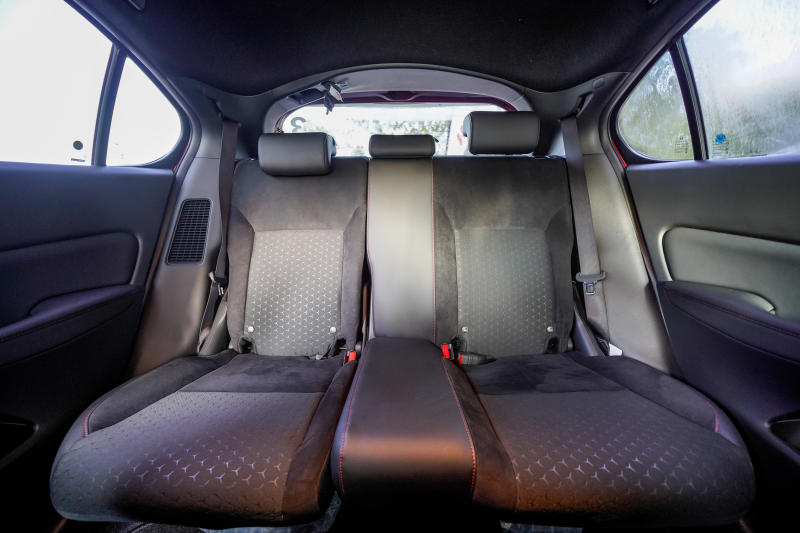
Both cars are able to take on Malaysian back roads competently but the V, with a kerb weight of 1,151kg, seems to need a heavier right foot to wring out the best of the i-VTEC block.
The RS has plenty of punch to go around with its petrol/electric powertrain and it’ll happily bring itself back up to speed with relative ease despite being heavier at 1,249kg.
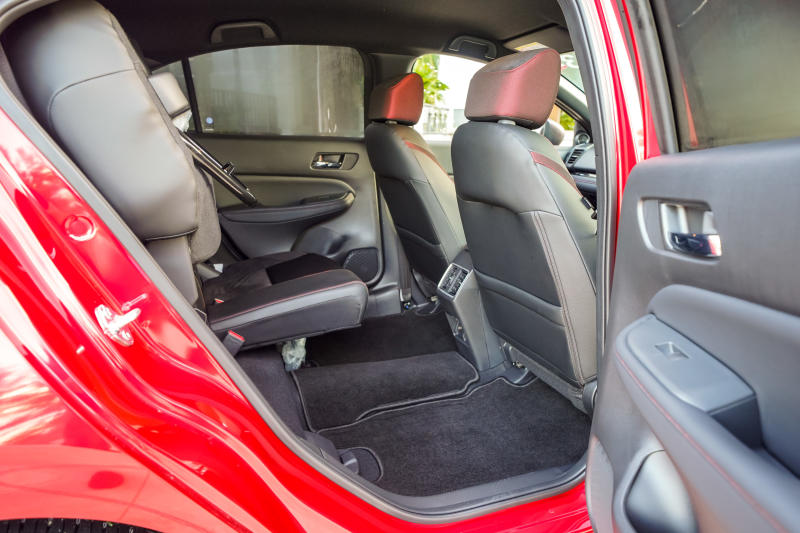
With the RS needing 9.7 seconds to do the 0-100kph sprint (V - 10.7 seconds), both variants simply outpace the competition although the RS gets a lower top speed of 175kph (V is rated at 194kph).
Steering the V and RS in and out of corners is effortless and crisp, and this is most pleasing.

Even with a cost-effective torsion beam for its rear suspension and MacPherson struts for the front, there’s still a certain amount of refinement available which not only adds comfort to the mix but also a sense of satisfaction when traversing over uneven road surfaces at speed.
This is something that’s often associated with continental brands.

Honda seems to have truly begun closing in by injecting this quality into this segment.
The hefty weight of the RS’ lithium-ion battery pack under the boot’s floorboard made the rear-end feel planted.

The same can’t be said of the V as it has only a lighter 15-inch spare tyre to press the tail downwards.
The less showy V, with its already impressive fuel economy, should be a sufficient fit for a myriad of people seeking a versatile commuter for a wide range of duties.

This and the fact that it also provides access to a class-leading 289-litre boot that’s expandable to 841 or 1,189 litres via the rear’s Ultra Seats that’s able to not only fold the rear 60:40-split backrests downwards but also fold the rear bench upwards to accommodate tall and bulky items.
As for the “jazzed-up” RS, it would be perfect for those with deeper pockets and a preference for a sportier and somewhat sophisticated representation of their “investment”.
The RS buyer will also benefit from a plethora of safety equipment, extra grunt and a way lower fuel consumption. - Jay Wong

